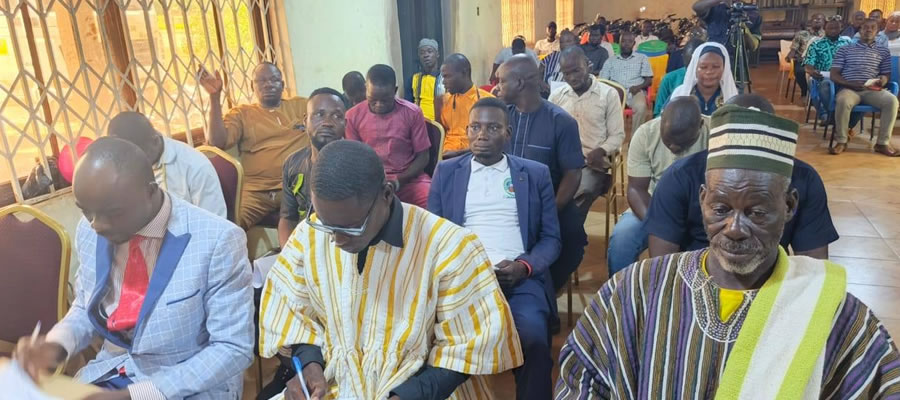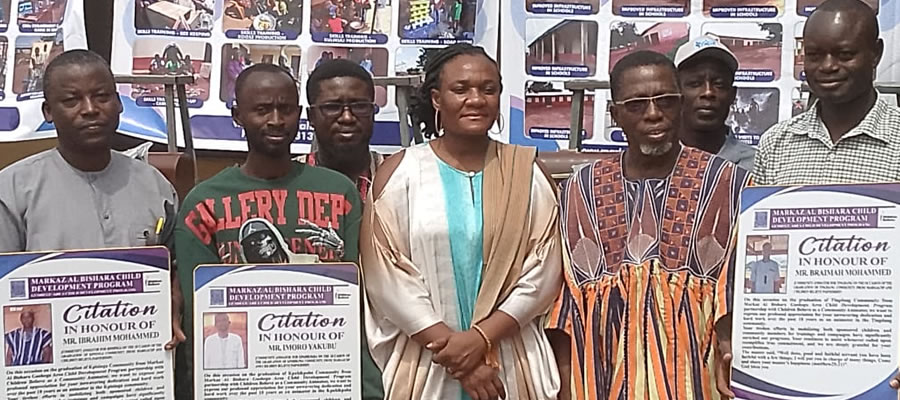

Population and Human Settlement Pattern
According to results of the Population and Housing Census (PHC) released by the Ghana Statistical Services for the 2000 census, there are 125,430 people living in 469 communities in the Municipality. The population of the Municipality has doubled since the last census in 1984 with annual growth rate averaging 3.0%. The sex composition of the district shows that females constitute 51.7 % of the population while males are 48.3%. The adult population, that is, 18 years and above is 60,397, (48%) while the dependency population is 63,696, with a ratio of 1:97.
The largest household size in the Northern Region is in Karaga (11.1) while Gushegu ranks third (8.9). Considering that household sizes are larger in rural than in urban areas, the average household size for the Municipality will be 8 persons. The human settlement pattern of the district is skewed towards populations living below 300. Indeed about 80.4% of settlements in the district have populations less than 800. Similarly, 51% of the total Municipal population lives in settlements below 800 people. Gushegu and Karaga are the only urban settlements with populations more than 10,000. The two towns combined have a total population of 26,493, that is, 21% of the Municipality's population.
This type of settlement pattern as prevalent in the Municipality has serious development implications. It makes the provision of basic social amenities very difficult, as majority of the settlements do not have the threshold population for certain amenities. If the concept of social justice will apply, it will mean equitable distribution of services. A cost-effective way is to spatially distribute projects to cluster of communities in catchment areas. This can promote intra-community interactions in the Municipality.
Environmental Situation
The environmental sanitational picture of the Municipality is worse. The management of waste and public toilets has become a big task for District Assemblies over the years. To the extent that waste management has become a non-starter for District Assemblies, public toilets have becomes health hazards to the people.
The current strategy for sanitation with respect to toilets is to encourage all households to own their toilets. Although Gushegu Municipality was piloted under the IDA sanitation component, the number of households with VIP latrines in the Municipality has not improved. The Northern Region Water and Sanitation Project (NORWASP) has up to 2000 VIP latrines for rural communities in the Municipality. The World Visions International has also embarked on a sanitation project in the Municipality in the last two years.
Other environmental sanitation issues that are very critical for the health of the people in the Municipality relate to the issues of burials at homes. Although this has been identified as a health hazard by the development agencies and a public cemetery has been allocated, people still bury their dead in their homes. The facts that there are shallow wells in the township and in houses, chances are that sipping of toxic from the dead into the wells is greater. The issue of water and sanitation in the Municipality notwithstanding, there are good prospects for increased coverage of water and sanitation in the Municipality. The Governments of Ghana’s policy of providing water to 85% by 2008 to Ghanaians is an opportunity for the Municipality.
The Municipal Assembly has already, as part of this Medium Term Development Plan, developed a water and sanitation plan, that proposes to increase the coverage to 85% by the year 2008. The presence of the Northern Region Water and Sanitation Project NORWASP will help increase the coverage. There is also on the drawing board, a Northern Region Small Towns Water and Sanitation Project (NORST) that will cover small towns in the Municipality. The willingness of the people to contribute to the capital cost of facilities is also a potential for increased water coverage in the Municipality.
Exploitation of the Forest Reserves
Other Environmental issues critical for the Municipality's consideration is the operations of chain saw operators in the forest reserves of the Municipality. The operators are from the south, who have identified the potential timber in the area, especially the odum species and have, in connivance of some powerful chiefs, have begun exploiting the reserves. The attention of the forestry commission needs to drawn to this to save the area from deforestation.
Date Created : 11/18/2017 4:52:35 AM









 facebook
facebook
 twitter
twitter
 Youtube
Youtube
 +233 593 831 280
+233 593 831 280 0800 430 430
0800 430 430 GPS: GE-231-4383
GPS: GE-231-4383 info@ghanadistricts.com
info@ghanadistricts.com Box GP1044, Accra, Ghana
Box GP1044, Accra, Ghana